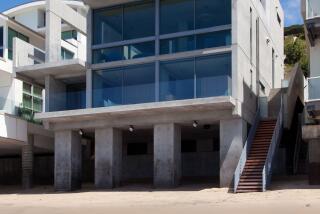Doctors’ Work Controversy: No Easy Fix for the County
On the afternoon of April 12, 31-year-old Torin Comeaux spent six hours awaiting surgery in the trauma center of Martin Luther King Jr./Drew Medical Center because no vascular surgeon could be found to treat him at the South Los Angeles hospital. Eventually he was airlifted to another hospital, and he died there after surgery for a gunshot wound to the knee. Medical experts said his injury should not have been fatal.
A subsequent investigation showed that although Drew was required by law to have a vascular surgeon available and within 30 minutes of the operating room at all times, no such specialist was scheduled for duty for that night or for any other between April 11 and April 30.
Last week, two outraged Los Angeles County supervisors called for a sweeping investigation into what they correctly identified as the principal cause of those violations and similar ones throughout the six-hospital county system: an overly lax policy that has allowed county doctors to moonlight lucratively at private hospitals when they are supposed to be supervising and practicing at public ones.
To clamp down on the practice, three supervisors called for surprise audits and inspections at the county hospitals. If the violations found during the inspections were followed by firm sanctions--like firing doctors who knowingly and consistently disobeyed county laws--the proposed oversight could stem some abuse. Still, the county’s moonlighting problem is a complex one that won’t be solved by punitive measures alone.
For instance, because private hospitals are able to pay their physicians about 50% more than the county, the county seeks to attract top doctors by allowing the right to moonlight up to 24 hours a week.
Brian Johnston, immediate past president of the Los Angeles County Medical Assn. and an emergency room physician, points out that allowing moonlighting is not in itself bad social policy: “It’s served a valid purpose within the county system. If the county now ham-handedly says ‘no moonlighting,’ they could lose a very good teaching population that would not otherwise be available.”
There is, in fact, no inherent harm in bending the rules to accommodate what county medical director Dr. Donald Thomas calls the “asymmetrical hours” of emergency medical practice. But flexibility in hours must be tied to responsibility in deed.
When the county renegotiates its yearly contracts with physicians, it should require more than the punching of a time clock. Physicians should accept responsibility for supervising certain medical services and then be evaluated for their performance according to objective standards like national morbidity and mortality reports.
National organizations, beginning with the powerful Joint Commission on Accreditation of Health Care Organizations, should consider formulating national standards to limit the number of hours that physicians can work during any one period. Outrageously, such laws exist for truck drivers but not for physicians who have completed residency training.
In 1995, Supervisor Yvonne Brathwaite Burke upbraided the county’s Health Department for failing to crack down on moonlighting abuses, saying, “I’ve had complaints about this again and again and again, and every time I get a report back saying, ‘We’re working on it.’ ” She said much the same last week, but ratcheting up the rhetoric won’t be enough. Solid and specific--and realistic--reforms are needed.
More to Read
Sign up for Essential California
The most important California stories and recommendations in your inbox every morning.
You may occasionally receive promotional content from the Los Angeles Times.










